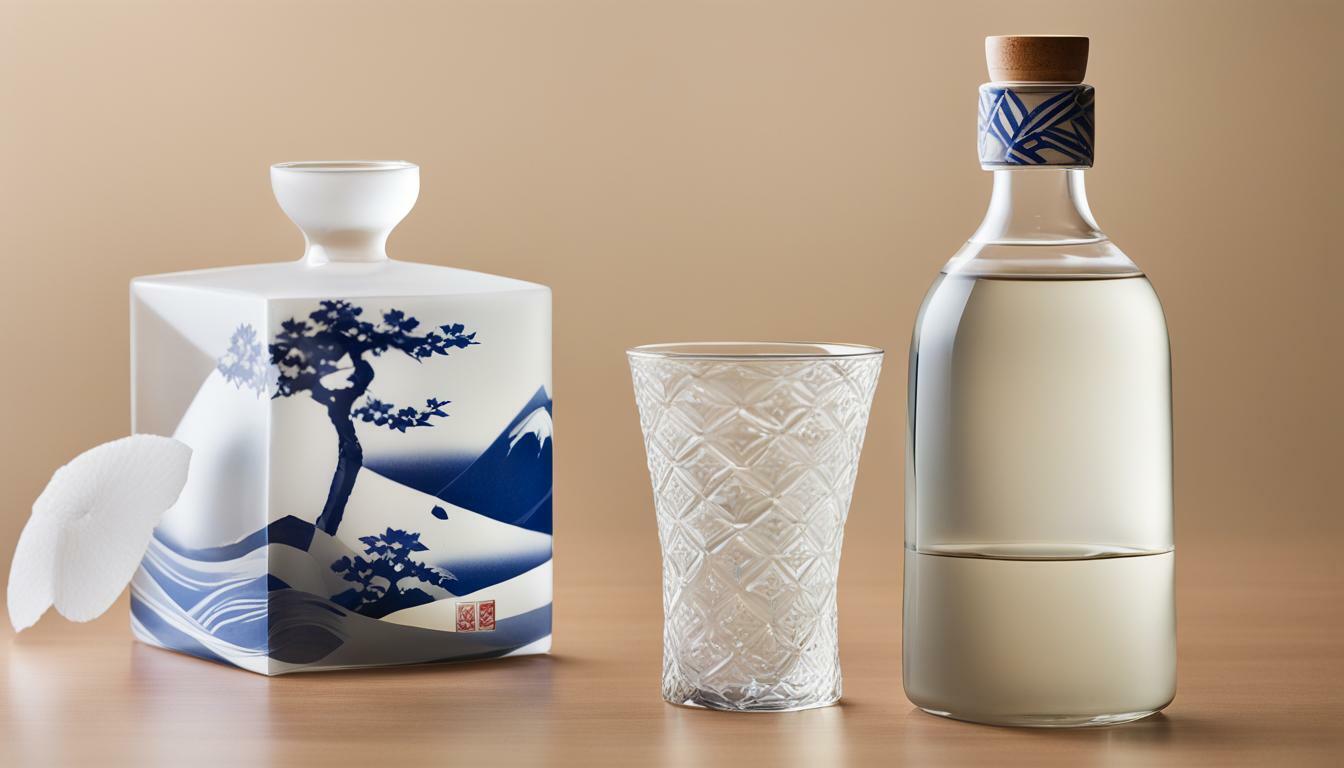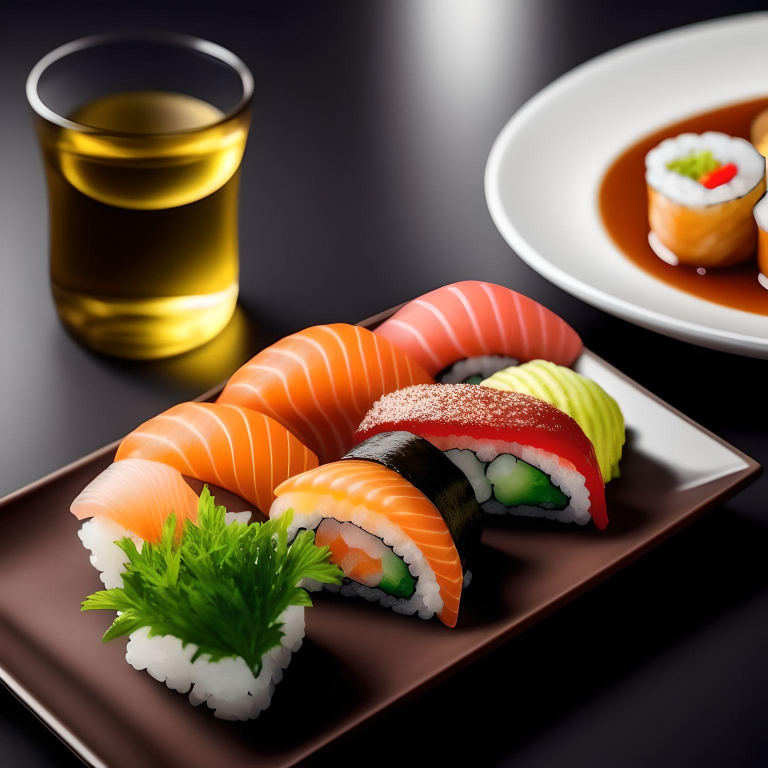Understanding Sake Polishing Grades: Uncover the Secrets
Welcome to our guide on sake polishing grades! If you’re a fan of sake, you may have come across terms such as “Junmai Daiginjo” or “Ginjo” on sake bottles. These terms denote different grades of sake polishing, which vary in the degree of rice polishing. In this section, we’ll dive deeper into what sake polishing grades are, and why they matter in the production of sake.
Key Takeaways:
- Sake polishing grades indicate the degree of rice polishing and affect the flavor of the final product.
- Higher polishing grades result in a more refined and delicate flavor profile.
What Are Sake Polishing Grades?
Now that we understand the importance of sake polishing grades in the production of sake, let’s delve deeper into the meaning. When it comes to sake polishing, the end goal is to remove the outer layer of the rice grain, which contains impurities that can affect the taste and aroma of the final product. The amount of polishing directly affects the flavor and quality of the sake.
The polishing process involves using a machine to remove the outer layers of the rice grain, leaving behind a starchy core that is used to make sake. The degree of rice polishing is measured as a percentage, with the highest percentage indicating the most polished rice.
There are many different grades of sake polishing, with some of the most common being Junmai, Honjozo, Ginjo, and Daiginjo. The grades are classified based on the degree of rice polishing, with Junmai being the least polished and Daiginjo being the most polished.
What are the Different Sake Polishing Grades and Their Significance?
The Junmai grade is made from rice that has been polished to at least 70%, leaving behind 30% of the original grain. This grade is known for its full-bodied and hearty flavor, with a slightly nutty taste.
The Honjozo grade requires rice to be polished to at least 70%, but with added alcohol during the brewing process. This results in a lighter body and cleaner taste, making it a great choice for pairing with a variety of foods.
The Ginjo grade is made from rice that has been polished to at least 60%, allowing for a more refined and delicate flavor profile. This grade is often described as having fruity and floral notes, with a light and clean finish.
The Daiginjo grade is the most polished, with rice being polished to at least 50%. This results in an incredibly smooth and elegant flavor, often with complex notes. This grade is considered the finest and most delicate of all sake polishing grades.
The Impact of Polishing on Sake Flavor
Now that we understand what sake polishing grades are and how they are determined, let’s take a closer look at their importance in shaping the flavor of sake. The polishing process not only removes the outer layer of the rice grain, but also plays a critical role in removing unwanted impurities that can affect the taste of the final product.
As the rice is polished to higher grades, the resulting sake becomes more refined and delicate in flavor. This is because more of the fat, protein, and minerals are removed from the rice, leaving behind mostly starch. This starch is then converted into sugar and fermented into alcohol, resulting in a clean and smooth taste.
Higher polishing grades are also known to produce more fragrant and complex aromas in the sake. This is due to the fact that the outer layer of the rice grain contains oils and amino acids that contribute to the scent of the sake. By removing this layer, the sake can take on a more subtle and nuanced aroma.
However, it’s worth noting that the flavor profile of sake is not solely determined by the polishing grade. Other factors, such as the type of rice used, the yeast strain, and the brewing method, can also significantly impact the taste of the final product. That being said, the polishing grade is a crucial component in the production of high-quality sake.
Understanding the Different Sake Polishing Grades
Now that we have explored the concept of sake polishing grades, let us take a closer look at the different grades available. The sake polishing grades are labeled based on the percentage of rice that remains after polishing, with a lower percentage indicating a higher level of polishing.
The highest grade of sake polishing is known as Junmai Daiginjo, where the rice is polished to at least 50 percent. This results in a delicate and refined taste with fruity and floral notes. The next level is Daiginjo, where the rice is polished to at least 60 percent. Daiginjo sake has a slightly bolder flavor than Junmai Daiginjo, but still maintains a smooth finish.
Ginjo sake is the next grade, with rice polished to at least 60 percent. It has a lighter and slightly fruitier taste compared to Daiginjo. Alternatively, Junmai and Honjozo are the two lower grades, with rice polished to at least 70 percent and 60 percent, respectively. These sakes have a more robust and earthy flavor than the premium grades.
It is important to note that the milling percentage is not an accurate indicator of quality, as personal preferences play a significant role in determining the ideal polishing grade. However, it is helpful to know the grading system and its associated characteristics when selecting a sake to enhance your drinking experience.
Choosing the Right Sake Polishing Grade
Now that we understand the significance of sake polishing grades, let’s explore how to choose the best one for you.
First, consider the flavor profile you desire. If you prefer a bolder and more robust taste, a lower polishing grade, such as 70% or lower, may be suitable. However, if you prefer a more delicate and refined flavor, a higher polishing grade, such as 50% or higher, may be more suitable.
Secondly, consider the occasion. If you are drinking sake on its own, a higher polishing grade may be more enjoyable as it can be sipped and savored slowly. However, if you are pairing sake with food, a lower polishing grade may complement stronger flavors better.
Lastly, consider the food pairings. For example, sushi and sashimi are best paired with a higher polishing grade sake, while yakitori and grilled meats are best paired with a lower polishing grade sake.
Some popular sake polishing grades and their recommended uses include:
- 70% or lower – suitable for cooking and pairing with stronger flavors
- 60% – versatile and suitable for many food pairings
- 50% – pairs well with delicate flavors such as seafood and vegetables
- 40% or lower – best enjoyed on its own as a sipping sake
Remember, there is no right or wrong polishing grade to choose. It all depends on personal preferences and the occasion. Experiment with different grades and discover the one that suits you best.
Conclusion
Now that you understand the significance of sake polishing grades, you can appreciate the complexity and artistry involved in producing high-quality sake. By refining the rice to varying degrees, brewers can create sake with unique flavors and textures, making it a versatile beverage that can complement a wide range of meals and occasions.
We encourage you to experiment with different polishing grades and find the one that best suits your taste preferences. Whether you prefer a bold and robust flavor or a delicate and refined taste, there is a sake polishing grade out there for you.
Next time you purchase a bottle of sake, take a moment to examine the label and see if you can determine the polishing grade. Consider the possibilities that open up when you can taste the difference between a 70% and 50% polished sake.
Thank you for taking the time to learn about the world of sake polishing grades with us. We hope this article has inspired you to continue exploring the vast and fascinating world of sake. Kampai!






